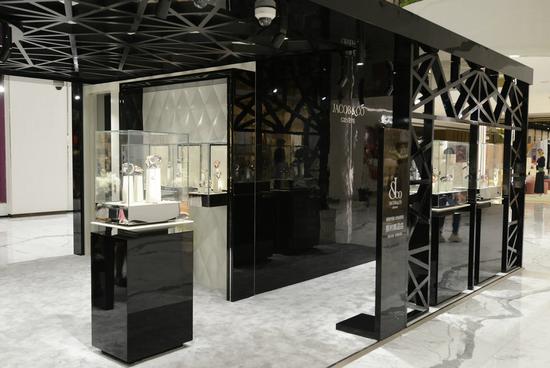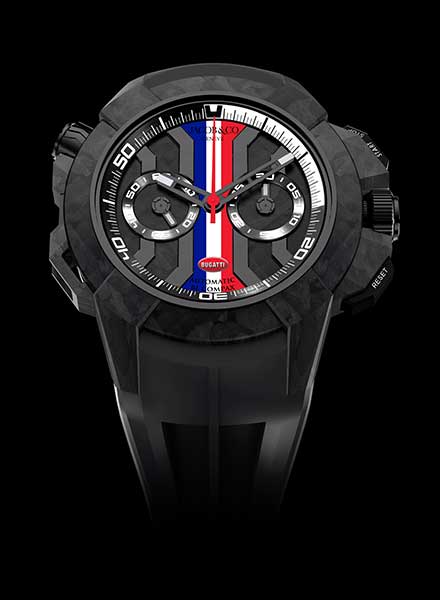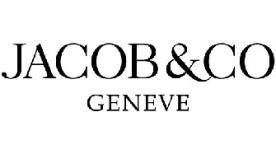Recently, it seems that Jacob & Co. has really started to gain awareness with a wider audience for their timepieces, even though the Astronomia Tourbillon was launched in 2014. Was it just a matter of time, or was there a change in marketing direction that catalysed this wave of awareness?
In terms of communications, we are starting to focus more and more on the digital side of things, Instagram and so on. That’s part of the growth in awareness that you see. Previously we were a niche brand — well, we are still a niche brand now, we don’t produce thousands and thousands of watches. We still have some way to go in terms of speaking about our watches and about the brand, but it helps a lot in terms of exposure, having Jacob [Arabo, founder of Jacob & Co.] and his well-known relationships. The brand’s popularity in certain countries, based on our jewellery expertise, also helps.
Tell us more about the Jacob & Co. watch customer.
At the moment, I would describe the US market as very strong for us. We are opening a boutique in [upscale mall] SKP Beijing, so as you can see we are developing the Chinese market. In Thailand, as well, we are opening a boutique in the first week of November, and we have plans to go into countries such as Kuwait and Saudi Arabia with external boutiques. Within Latin America, currently Mexico is the market that works best for us, because of their huge customer base, which is very sophisticated and loves our style of watches.
I would say that Jacob & Co. appeals primarily to mature markets. If you’re buying a Jacob & Co. watch, it’s definitely not your first watch purchase. People who buy our watches clearly know about fine watchmaking.

Is there a big difference in the way that male and female customers approach Jacob & Co.? And what’s the Jacob & Co. strategy in speaking with these customer segments?
Today, I would say that 70 per cent of our watch purchases are by men, while jewellery is of course a ladies’ market. Although they are different audiences and we have different people in the company who are in charge of watch communications and jewellery communications, I feel strongly that we need to bring them closer together.
At the moment, however, we are already in a very strong position. There is this mental separation in our customers — our watch customers see us as a men’s brand and our jewellery customers see us as a ladies’ brand. It works very well for us, because if you make even a basic comparison with some other brands today, there are some companies that have never been able to sell watches to men, because people see them primarily as a jewellery brand that caters to women. We don’t have that problem.
What’s more, we are a young brand. Jacob launched his company 34 years ago and we began with watches 18 years ago. The upcoming generations may not have the same attitudes towards gender lines as previous audiences, but we are young and agile enough that I don’t think we run the risk of growing stagnant and losing customers.
Your past experience has been with big watchmaking groups and independent companies, at various price points and in different markets. What do you uniquely bring to the CEO position at Jacob & Co. that was missing before?
Jacob & Co. is actually at a very important point right now, which is why it’s crucial to organise our internal structures, setting up international sales development and marketing operations. I have worked previously within some big groups where there is a very strong internal organisation, and also smaller brands which rely more on innovative strategy and partners. I have lived and worked in Hong Kong and the US, and I think this gives a very international perspective and the necessary vision to structure the company according to our needs.
For example, the flexibility we have today as a relatively small and independent brand is amazing. The time taken for a product to reach the market is very short, compared to how it would be in a more corporatised group company. It takes two minutes for us to speak to Jacob directly and have an answer from the top, whereas a similar decision within a conglomerate would take months of presentations and committees. So the timing really couldn’t be better for us right now, and if things go right we could take Jacob & Co. to the next level.
As Jacob & Co grows in reputation for innovative and high-end technical watchmaking, are there plans to go down the manufacture path?
I think you can integrate parts of the supply chain, but for us, working with the best in Switzerland for over 15 years gives us a huge amount of flexibility that we don’t want to lose. Most of the time we are the primary clients of our suppliers, so we already have that advantage in terms of cost and delivery. But if we took the step of integrating our suppliers and their skills, that would be very difficult, in my opinion. The product cost would explode, for one thing. There would be a lot of internal redundancy that you don’t experience with an external supplier who has a number of different clients. In the past, everyone, even the very best brands, were using external suppliers. Many still do. And in some examples, those that tried to verticalise quickly realised that it wasn’t working. Some companies are just not built to be part of a larger system and we have seen instances in the past where successful suppliers didn’t do well anymore after being integrated within a larger group. And in addition, there is a lot of young, creative talent out there, who want to work in a small team for an external movement supplier, where they can be involved in lots of projects, instead of being part of a huge army.
This is very important for me, because I think a lot of the creativity and new ideas that we see now are coming from such suppliers. It’s simple, the reason is that they need to be inventive — it’s how they exist. We have our own in-house engineers, who design what we want internally. It’s best to use in-house people for this because they can directly put the ideas of Jacob onto paper. After that, however, we look for the best people outside of the company who can make those ideas happen.
What’s the first thing you want to do as CEO of Jacob & Co.?
My first job is to review our organisation and see what structures need to be implemented. At the same time, we need to develop our sales and marketing internationally. We’ve done great sales to this day, thanks to Jacob’s incredible network, but what is important for the company is to have an international retail network. That’s my responsibility, to bring us into some key markets that were missing in the past — such as China and Thailand. In terms of sales, a lot can be done during big events with Jacob, but retailers can provide us constant business with their database of clients.
This is why we are leaning more towards external boutiques, which can carry both watches and jewellery, as compared to retailer points of sales, which is mainly watches. And we don’t need to be everywhere — our products are very high-end and niche anyway — but we should be present in every major capital.
This is, of course, reflective of your customer demographic?
We were at the event of our partner, Bugatti, and we had clients there who were from all over the world. We are really lucky, because we are not overly focused on one single market, we have a good worldwide balance. We don’t have the risk that some brands have by being too concentrated in one market. And because our products are so specific and high-end, our clients are all aligned in the watches that they are after, no matter where they are from. We don’t have one type of client in the Americas and a completely different type of client in Asia. What’s more, they are confident in wearing what they want. Some people may say that our watches are too big or too shiny, but our customers don’t care. They are themselves.

What would you most like to change about the way people see Jacob & Co.?
A couple of things. I showed a friend of mine some Jacob & Co. watches the other day, like our Palatial watches, which have a very classic look. He said, “I didn’t know you were doing this kind of watches.” Also, we communicate mostly about very high-end pieces, and sometimes people look first at the diamonds and they do not realise we have a triple tourbillon mechanism inside the watch. How many brands have that level of technical watchmaking?




